VEISE Electronics: Distinguishing the Pros and Cons of 360-Degree vs. Four-Channel Surveillance Systems for Fire Trucks
Comparing the Pros and Cons of 360-Degree and Four-Channel Surveillance Systems for Fire Trucks
Introduction
In every critical moment of blazing fires, fire trucks embody the hope of saving lives as they navigate through obstacles to reach the rescue site. To ensure that every mission is executed swiftly, safely, and efficiently, onboard surveillance systems play a crucial role. With a plethora of surveillance equipment available on the market, selecting the most suitable system for fire trucks is a vital consideration for fire departments and vehicle managers. Today, we will delve into a detailed comparison of four-channel surveillance and 360-degree panoramic surveillance systems for fire trucks to help you make an informed decision.
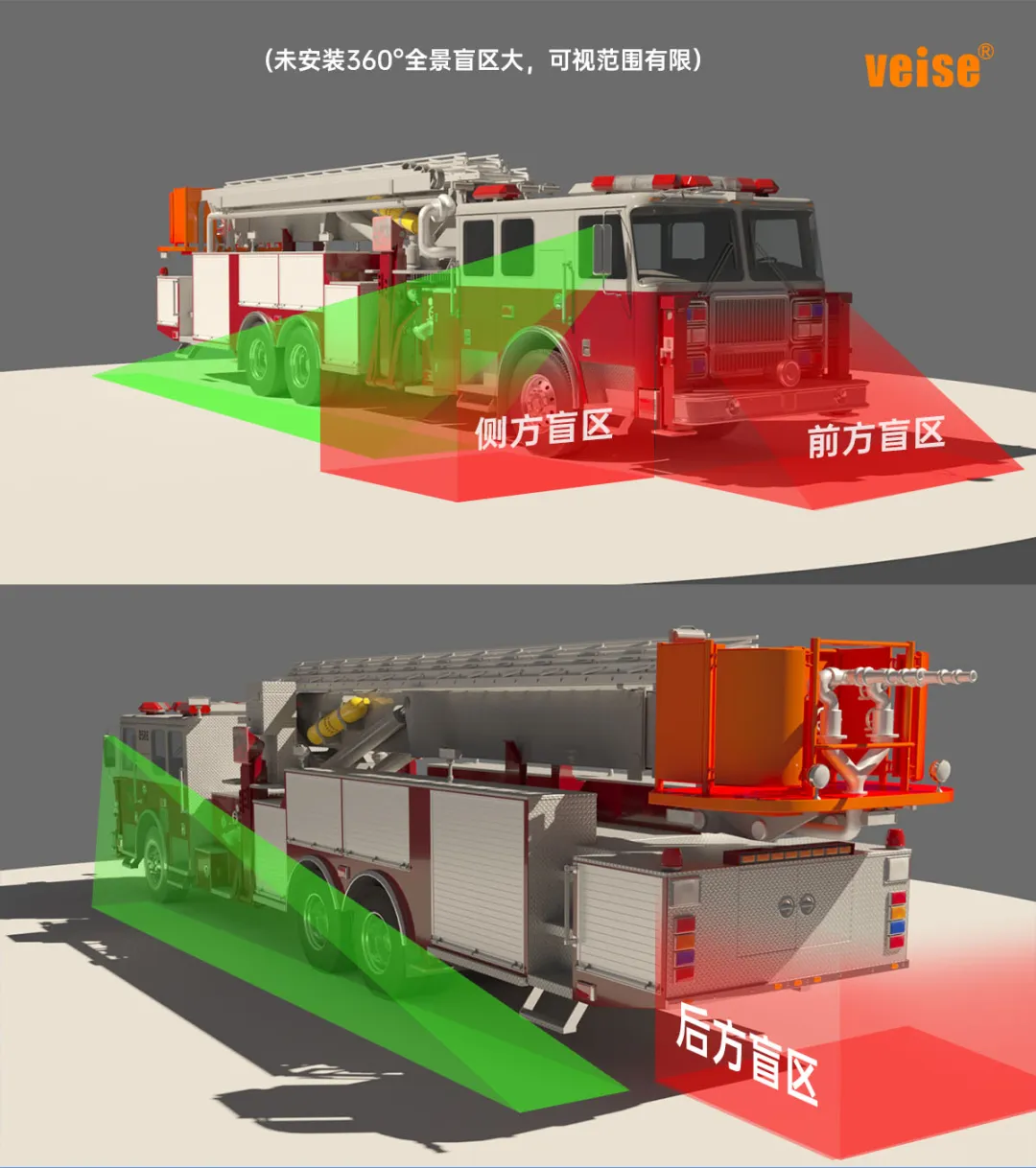
I. Four-Channel Surveillance: Limitations in Perspective
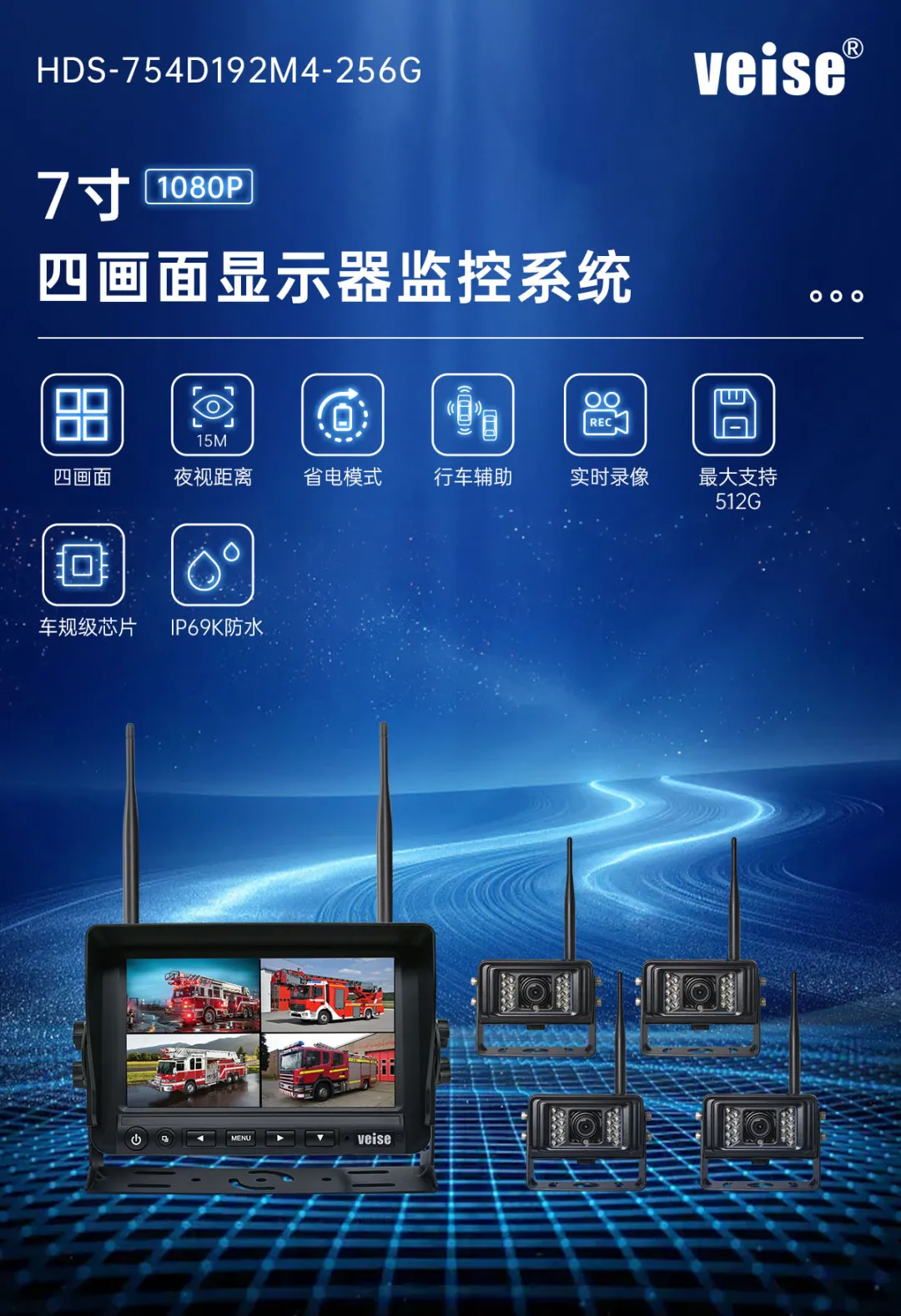
The four-channel surveillance system, known for its easy installation and relatively low cost, is widely used across various vehicle types. However, for specialized vehicles like fire trucks, whose surveillance needs exceed ordinary standards, the limitations of four-channel systems are becoming increasingly apparent.
Blind Spots
Four-channel surveillance uses standard cameras with a coverage angle of approximately 130° per camera. Although it covers the vehicle's surroundings, blind spots still exist. In emergency situations, these blind spots can hide pedestrians, obstacles, and other safety hazards, increasing uncertainty and risk during rescue operations. Additionally, fire trucks, being large and special-purpose vehicles with long chassis and high driving positions, have numerous blind spots. Factors such as turning radius and rapid deployment contribute to these blind spots and potential hazards.
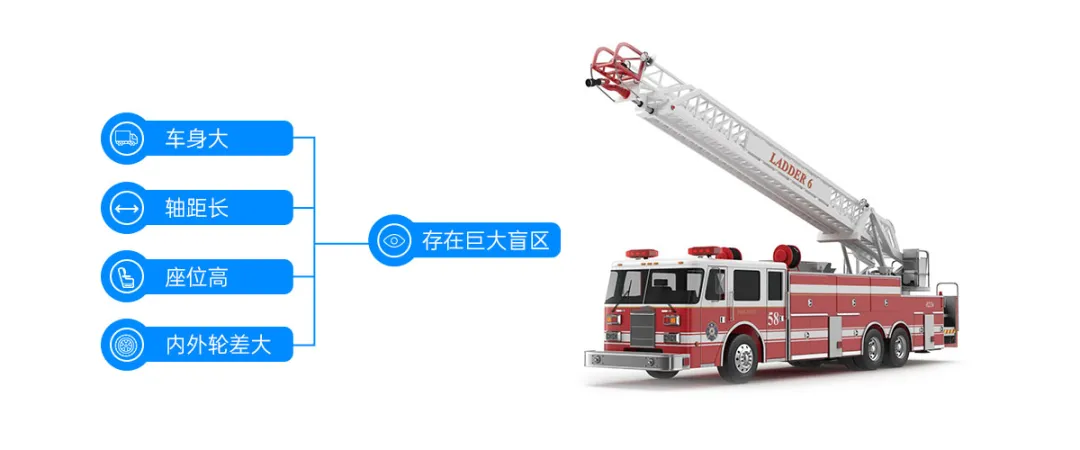
Lack of Comprehensive View
The four-channel system displays images in a split-screen format. Drivers need to quickly shift their attention to identify conditions in various directions, which adds to their workload and can lead to important information being missed in high-pressure rescue scenarios.
Furthermore, it cannot provide real-time 360-degree imagery, often referred to as a “bird’s-eye view.” In narrow alleyways or complex traffic environments, the lack of a comprehensive view makes it difficult for drivers to fully assess the situation around the vehicle, affecting the accuracy and timeliness of decision-making.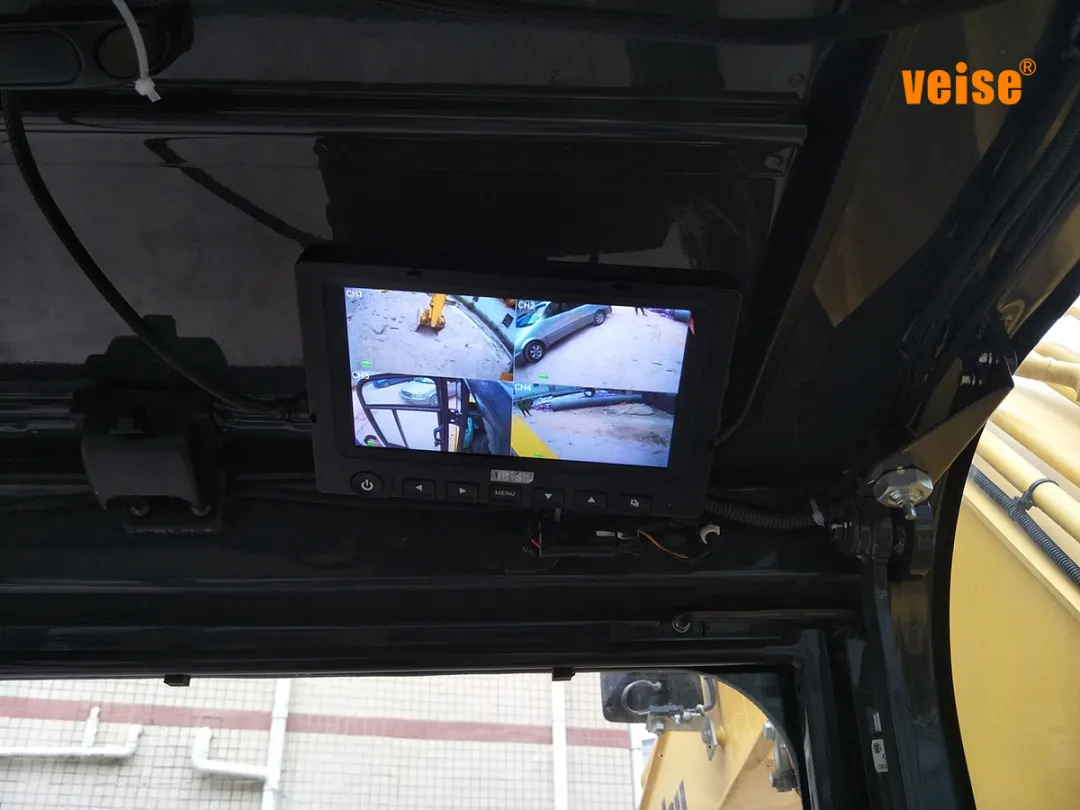
II. 360-Degree Panoramic Surveillance: Comprehensive Safety Guard
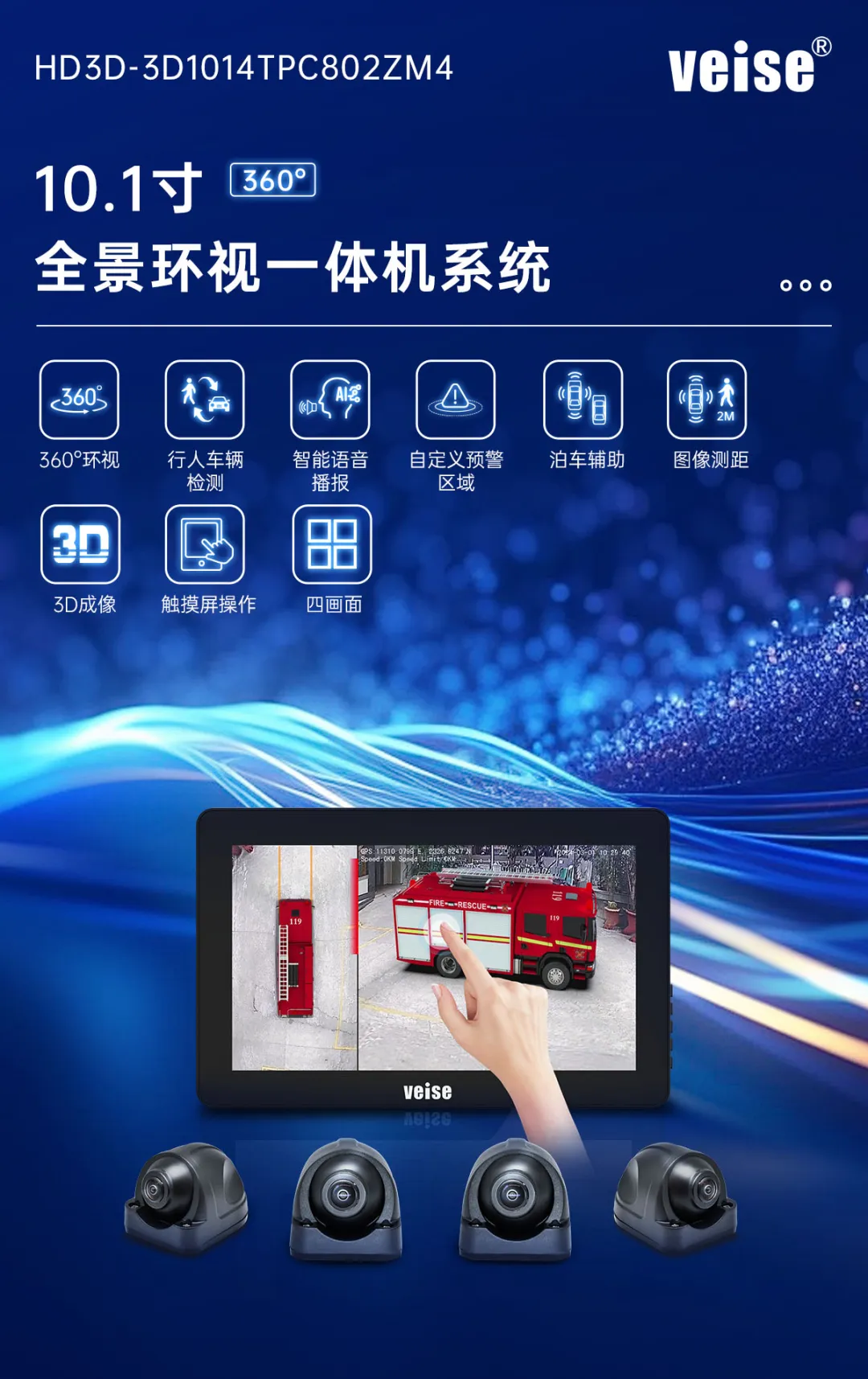
The advent of 360-degree panoramic surveillance systems has revolutionized onboard monitoring, offering unprecedented safety for fire trucks.
No Blind Spots, One-Button Switching
360-degree panoramic surveillance utilizes 210° fisheye wide-angle cameras and advanced stitching algorithms to achieve true 360-degree coverage, completely eliminating blind spots. This allows drivers to have a real-time view of every corner around the vehicle, whether in busy city streets or remote areas.
In addition to providing seamless panoramic images, the 360-degree system also features a one-button switch to a split-screen view, combining the convenience of four-channel monitoring with the comprehensiveness of panoramic surveillance. Drivers can choose the most suitable monitoring mode based on the situation, ensuring both complete visibility and operational flexibility.
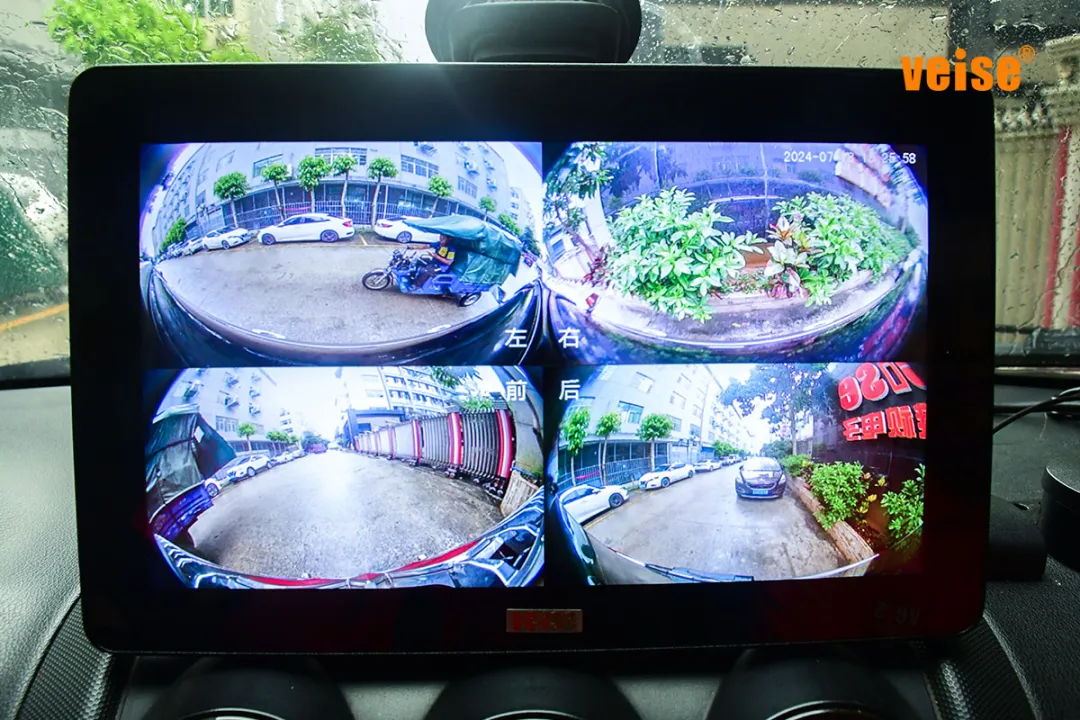
AI Intelligent Detection and Real-Time Playback
The 360-degree panoramic system is equipped with intelligent AI detection capabilities, automatically recognizing pedestrians and surrounding vehicles while alerting on safety distances to prevent collisions effectively.

The system supports 12 different image display modes controlled by intelligent voice commands, allowing drivers to switch between monitoring views with simple voice instructions, further enhancing safety and convenience.
Moreover, real-time video recording is supported, providing crucial evidence for incident documentation and ensuring fairness and justice.
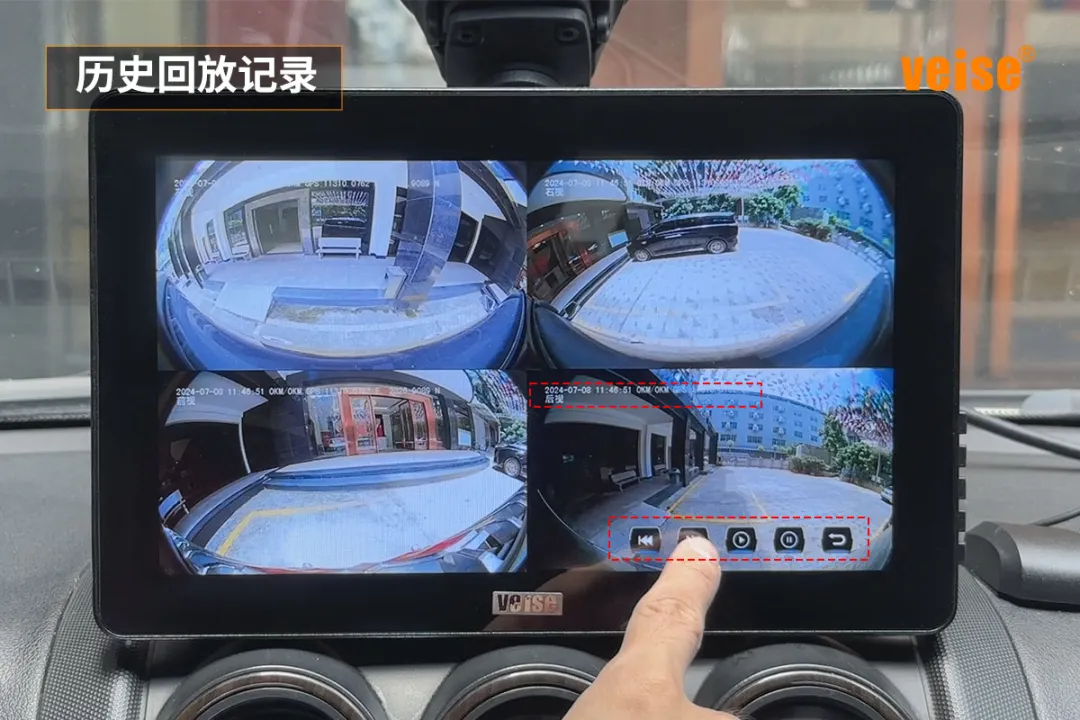
Touchscreen Operation and Video Data Storage
The touchscreen interface of the 360-degree panoramic system simplifies operations for firefighters. In time-critical rescue missions, every second saved respects life. The intuitive touchscreen operation enables quick adjustment of surveillance angles and review of key areas, significantly enhancing rescue efficiency and safety.
In addition to real-time video display, the system can store video footage for accident analysis, responsibility determination, and subsequent training and improvement. This has immeasurable value for enhancing the overall operational capability of fire teams.
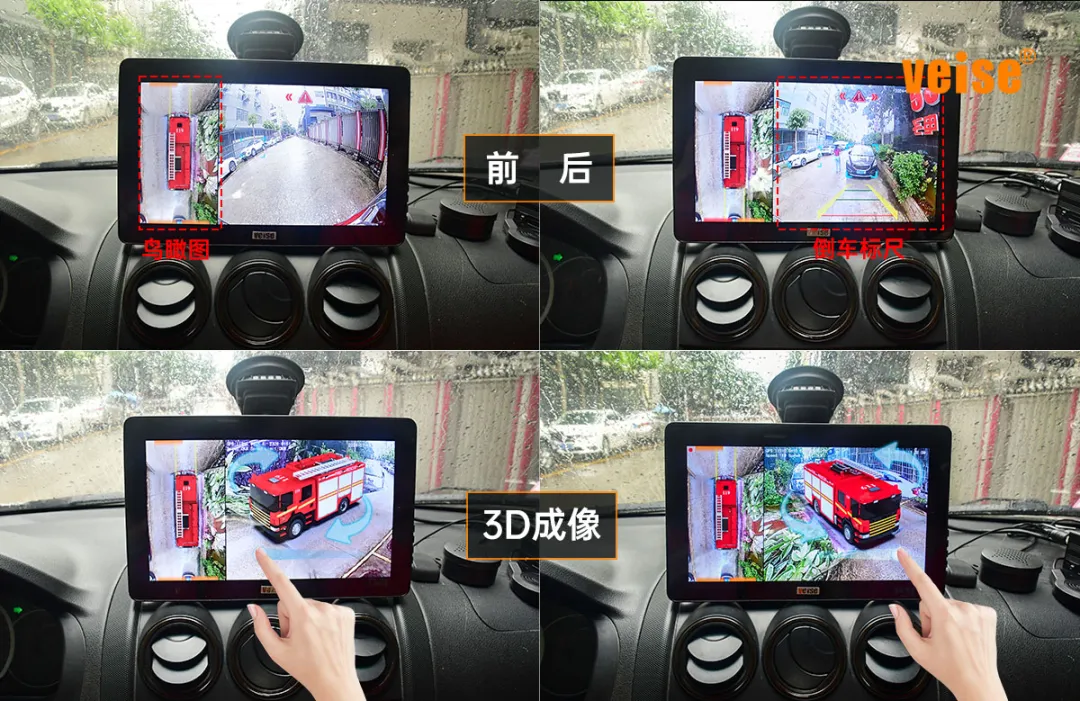
Conclusion
While four-channel surveillance may still be suitable for some vehicle types, its limitations are evident for fire trucks. The 360-degree panoramic surveillance system, with its no-blind-spot coverage, one-button switching, touchscreen operation, and video data storage, stands out as the preferred choice. It not only expands the driver's field of vision and enhances safety during driving and rescue operations but also simplifies operation processes, improving rescue efficiency. In an era of rapid technological advancement, choosing a 360-degree panoramic surveillance system represents a commitment to the future—a path to safer and more efficient rescues.
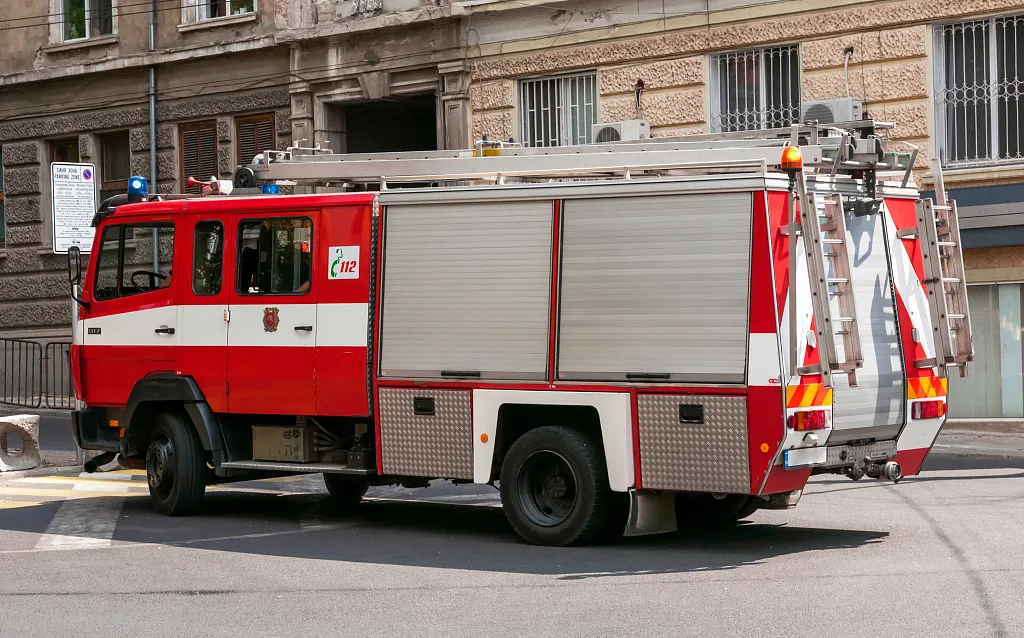
In the future, we will continue to explore innovative applications of onboard surveillance systems, safeguarding every rescue mission and ensuring that each departure is a robust support for life safety.
